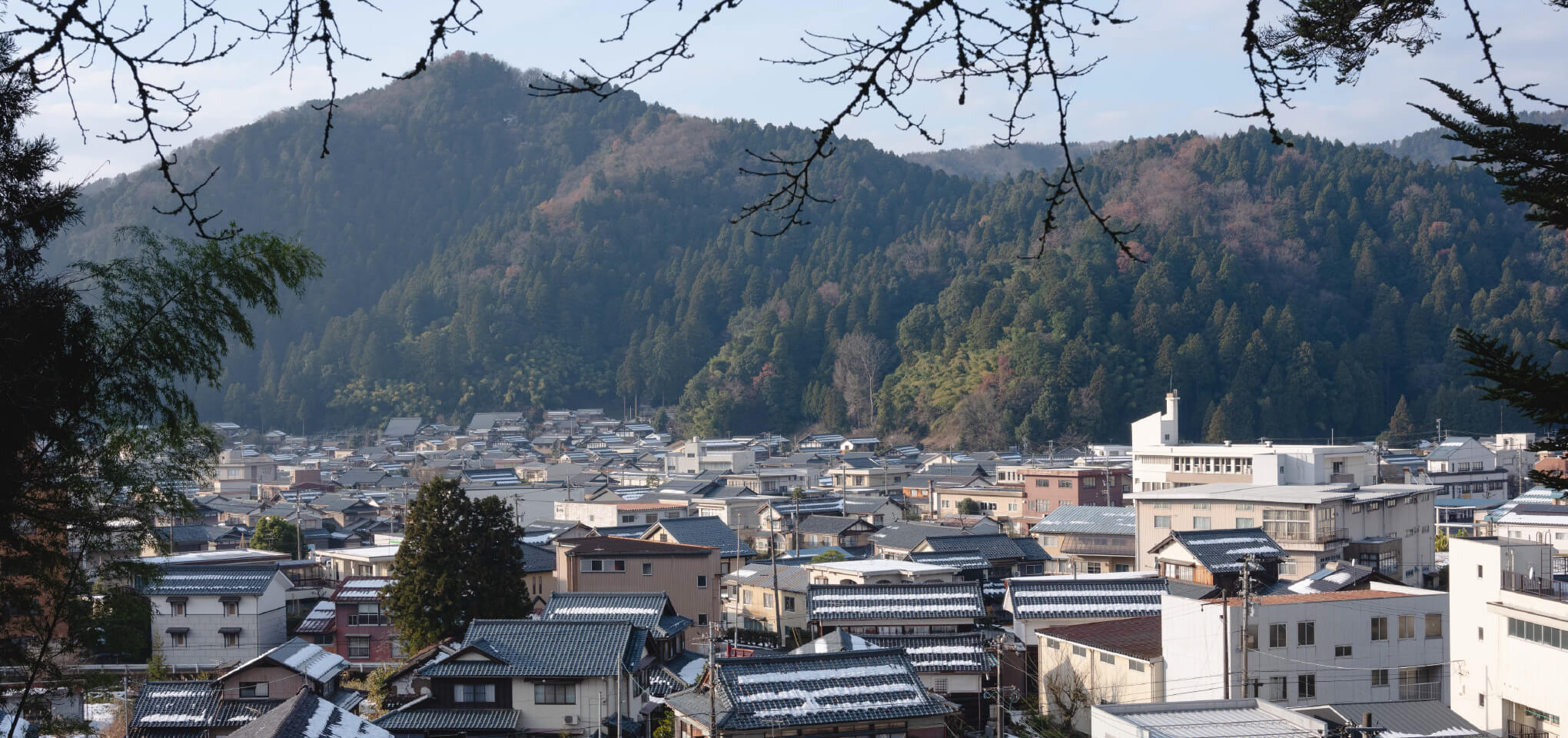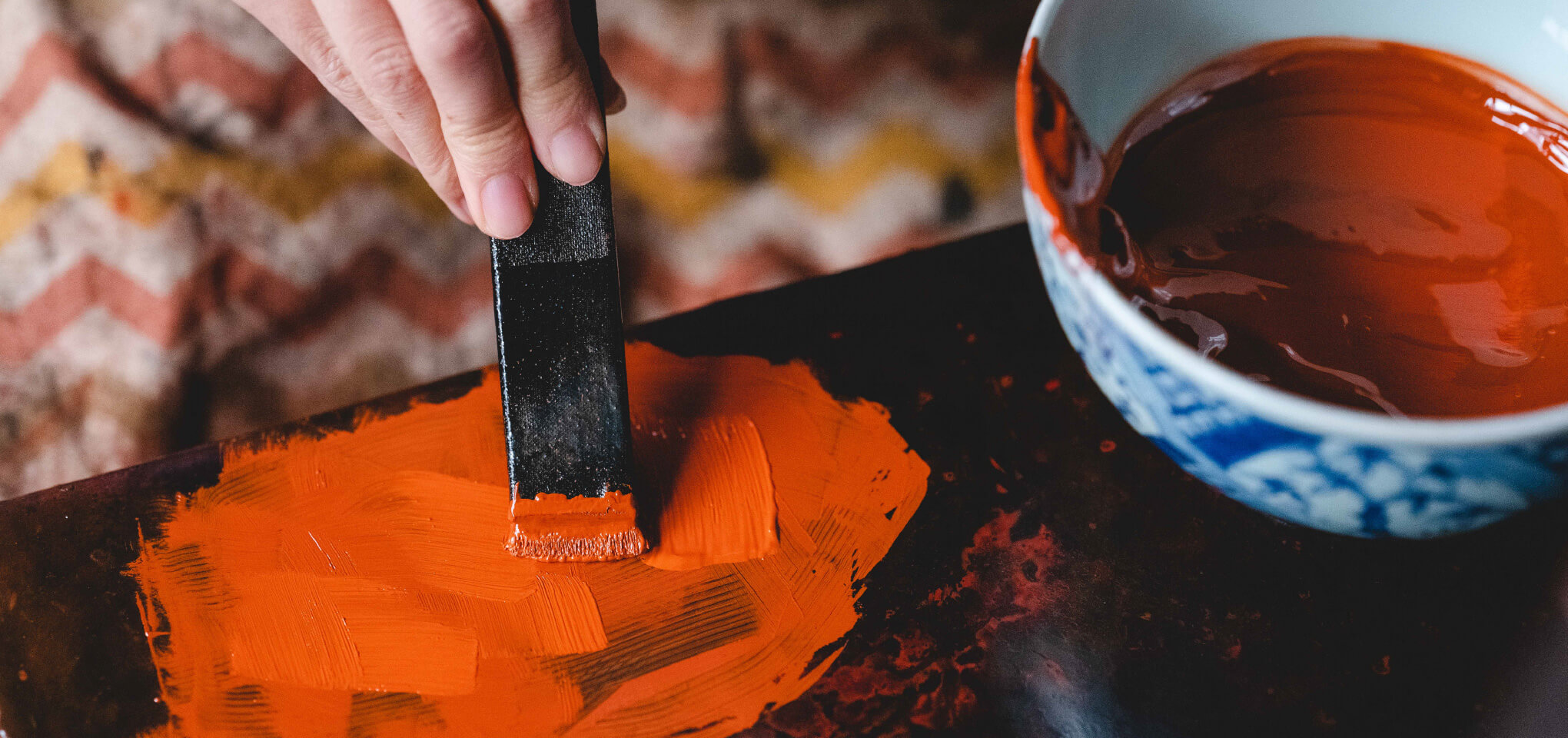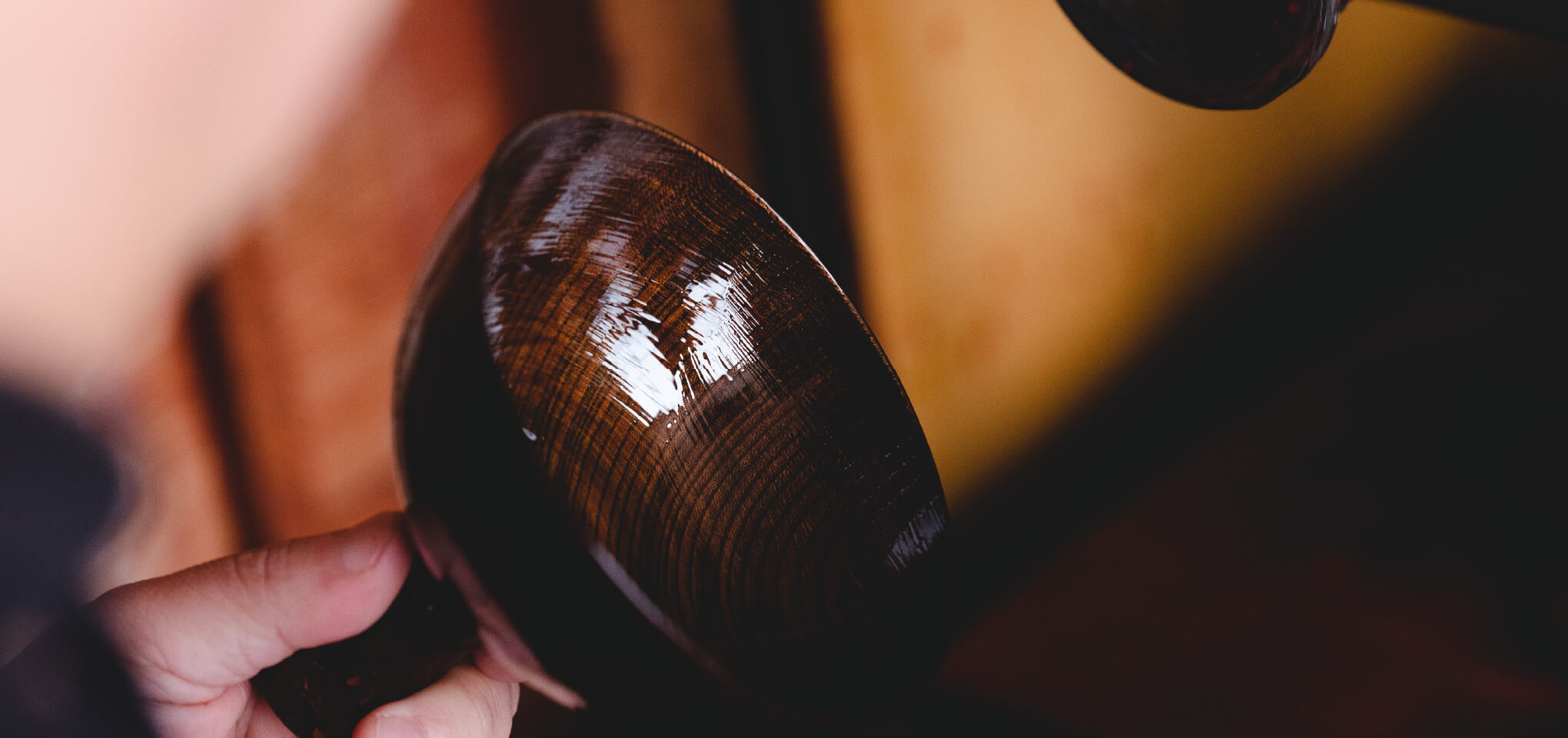What’sthis project?
“URUSHI is” is a project launched to make Japanese lacquerware more recognizable to people around the world. From soup bowls used daily to stacking storage boxes for special occasions, lacquerware is a traditional craft and has been a part of Japanese life since ancient times.
How is lacquerware made? What techniques are used? What do the craftsmen who make it think about? Even though lacquerware has been popular in Japan throughout the ages, there are still many things about it that are not well known.
The aim of this project is to introduce the appeal of urushi and lacquerware, especially Echizen lacquerware – expanding its potential and making it a part of daily life for people around the world.
How is lacquerware made? What techniques are used? What do the craftsmen who make it think about? Even though lacquerware has been popular in Japan throughout the ages, there are still many things about it that are not well known.
The aim of this project is to introduce the appeal of urushi and lacquerware, especially Echizen lacquerware – expanding its potential and making it a part of daily life for people around the world.

 What’s “urushi” and Echizen Lacquerware?
What’s “urushi” and Echizen Lacquerware?
Made from the sap from the lacquer tree, urushi is a natural coating material that has been used in Japan for centuries. It is painted on wood to prevent it from decaying so it can last longer.
Lacquerware is made by applying urushi to wooden vessels. Typical examples include bowls, multi-tiered boxes, trays, plates, and chopsticks. Valued for its durability and ease of decoration, it is an essential part of Japanese culture. Not only is it widely used for tableware, but also it is also used in buildings, Buddhist statues, and works of art.
Echizen lacquerware is one of the main types of lacquerware. Primarily made in the Kawada district of Sabae City, Fukui Prefecture, it is characterized by its glossy yet deep coating, lightness, and durability. Echizen lacquerware is not only composed of the traditional kind, where wood is coated with natural urushi, but also of industrial lacquerware, which is produced using synthetic resins and paints. This is a region that is not only home to centuries of tradition, but also reinventing itself through innovation.
Lacquerware is made by applying urushi to wooden vessels. Typical examples include bowls, multi-tiered boxes, trays, plates, and chopsticks. Valued for its durability and ease of decoration, it is an essential part of Japanese culture. Not only is it widely used for tableware, but also it is also used in buildings, Buddhist statues, and works of art.
Echizen lacquerware is one of the main types of lacquerware. Primarily made in the Kawada district of Sabae City, Fukui Prefecture, it is characterized by its glossy yet deep coating, lightness, and durability. Echizen lacquerware is not only composed of the traditional kind, where wood is coated with natural urushi, but also of industrial lacquerware, which is produced using synthetic resins and paints. This is a region that is not only home to centuries of tradition, but also reinventing itself through innovation.
 Traditional and industrial lacquerware
Traditional and industrial lacquerware
One of the reasons why Echizen lacquerware has developed so much is thanks to the advent of industrial lacquerware. Lacquerware from the Echizen region accounts for more than 80% of the lacquerware used in restaurants and traditional ryokan inns throughout Japan. Unlike the traditional kind, where natural lacquer is applied to wooden products, industrial lacquerware is made of materials such as plastic that are coated with chemical paints.
In traditional lacquerware, wood is carved into a vessel that is then coated with urushi. After drying, the urushi will set into the wood After the lacquering process is finished, lacquerware is decorated with chinkin or maki-e according to the product. Chinkin is a technique where patterns and designs are carved into the lacquerware, which are then covered with lacquer as an adhesive and then colored with gold or silver pigment. In maki-e, a picture is first painted with lacquer using a thin brush, after which gold or silver dust is sprinkled on to the lacquer before it dries.
Industrial lacquerware, on the other hand, is made up of synthetic resins or other materials and then painted with chemical paints. Screen printing is used to apply pictures and patterns for decoration. By simplifying the manufacturing process, it has become possible to produce large quantities at a lower cost.
Depending on the product, traditional and new techniques may be combined, such as by applying chemical paints to wood, or applying natural urushi to synthetic resins and then applying maki-e. Part of Echizen lacquerware is creating contemporary products by selecting the necessary techniques and technologies based on the purpose and budget.
In traditional lacquerware, wood is carved into a vessel that is then coated with urushi. After drying, the urushi will set into the wood After the lacquering process is finished, lacquerware is decorated with chinkin or maki-e according to the product. Chinkin is a technique where patterns and designs are carved into the lacquerware, which are then covered with lacquer as an adhesive and then colored with gold or silver pigment. In maki-e, a picture is first painted with lacquer using a thin brush, after which gold or silver dust is sprinkled on to the lacquer before it dries.
Industrial lacquerware, on the other hand, is made up of synthetic resins or other materials and then painted with chemical paints. Screen printing is used to apply pictures and patterns for decoration. By simplifying the manufacturing process, it has become possible to produce large quantities at a lower cost.
Depending on the product, traditional and new techniques may be combined, such as by applying chemical paints to wood, or applying natural urushi to synthetic resins and then applying maki-e. Part of Echizen lacquerware is creating contemporary products by selecting the necessary techniques and technologies based on the purpose and budget.


 Tools to make life more rich
Tools to make life more rich

Lacquerware is a traditional Japanese craft. One of the major types, Echizen lacquerware, has been an essential part of our lives for 1500 years, taking the form of bowls and traditional multi-tiered boxes called jubako. Urushi is durable, resistant to deterioration, and has antibacterial properties. Taking advantage of these characteristics, urushi is used today not only for tableware but also for a variety of other things.
As an excellent coating material, urushi continues to be used as a tool to enrich people's lives in the past and today.
As an excellent coating material, urushi continues to be used as a tool to enrich people's lives in the past and today.
 Division of labor in lacquerware production
Division of labor in lacquerware production

In the Kawada area, where Echizen lacquerware is produced, manufacturing is based on a system of division of labor. Traditional lacquerware is manufactured with the following steps: making the wood base, applying the urushi, and then decoration. Each process is handled by different craftsmen. There are only a few workshops that can handle all of the production processes.
In addition, there are different techniques required for making round objects such as bowls, which are made by woodturning, and square objects such as stacked wooden boxes, which are made by combining wooden parts. It is also different for making traditional or industrial lacquerware. Because of this diversification, each craftsman has their own individual speciality.
In addition, there are different techniques required for making round objects such as bowls, which are made by woodturning, and square objects such as stacked wooden boxes, which are made by combining wooden parts. It is also different for making traditional or industrial lacquerware. Because of this diversification, each craftsman has their own individual speciality.
 Tradition and innovation in lacquerware
Tradition and innovation in lacquerware

Traditionally, Echizen lacquerware is made by coating wood with lacquer – a craft that dates back to over 1500 years. In addition to the traditional kind, nowadays, the region also produces industrial lacquerware, which is made by applying urethane paint to synthetic resins for mass production. Both of these products are important to the production area.
Echizen lacquerware does not just stick to old customs, but continues to incorporate new and innovative techniques. In this place where tradition and innovation come together, there are many craftsmen who continue to push new boundaries for the craft.
Echizen lacquerware does not just stick to old customs, but continues to incorporate new and innovative techniques. In this place where tradition and innovation come together, there are many craftsmen who continue to push new boundaries for the craft.
 Paint it on anything
Paint it on anything

Urushi is a vital part of Japanese culture. It is used for tableware such as bowls and stacked boxes, for desks and chairs, as well as in the pillars and floors of buildings, Buddhist statues, and works of art. In fact, urushi has been used in a wide variety of applications since ancient times for its durability and antibacterial properties – ranging from the restoration of temples and shrines, to being found in car interiors, or industrial and medical products.
Taking it one step further by combining it with chemical points, it has become possible to apply urushi to any material – truly evolving in accordance with the changing times.
Taking it one step further by combining it with chemical points, it has become possible to apply urushi to any material – truly evolving in accordance with the changing times.
 Repair and Maintenance
Repair and Maintenance

Lacquerware can be repainted and repaired over and over again, making it something that can be used for a long time. If the coating becomes thin or starts to peel off, repainting fresh coats will make it look new again. It is also possible to repair cracks and chips by filling it with lacquer and gold dust – a technique called kintsugi that allows the lacquerware to take on an altogether new and unique look.

